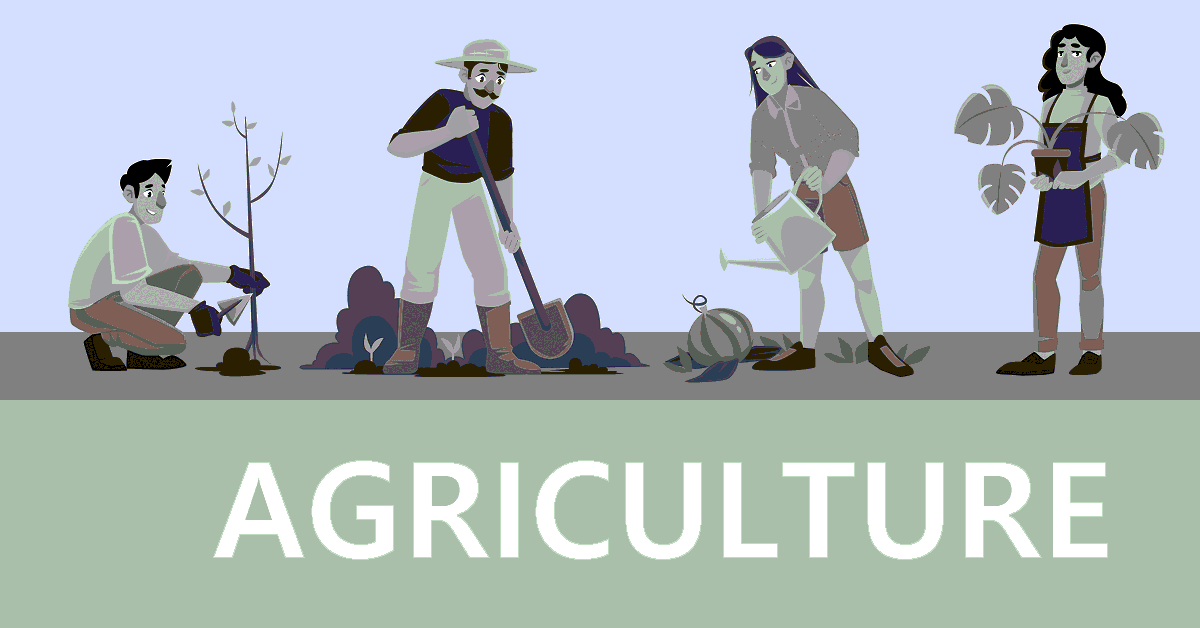
Agriculture and Food Security in Asia by 2030: Key Challenges, Solutions, and Trends
Introduction: Agriculture plays a vital role in ensuring food security and providing essential nutrients to the population. With over half of the world's hungry people residing in Asia, it's crucial to address the challenges and find sustainable solutions to improve food security in the region. In this article, we will delve into the current state of agriculture and food security in Asia, the challenges faced, and the initiatives and solutions being implemented to achieve sustainable food systems by 2030.
Current State of Agriculture and Food Security in Asia:
According to the Food and Agriculture Organization (FAO), 821 million people in the world suffered from hunger in 2018, and over half of them live in Asia. Despite this, the region has made significant progress in reducing hunger, with the number of undernourished people dropping from 547 million in 1990-92 to 520 million in 2014-16. However, many countries in the region still face food security challenges, such as limited food availability, food price spikes, and supply chain disruptions.
Key Challenges and Factors Affecting Food Security in Asia:
- Climate change: Climate change and its associated impacts, such as droughts, floods, and typhoons, can negatively impact food production and food security.
- Natural disasters: Natural disasters such as earthquakes, tsunamis, and typhoons can lead to the destruction of crops and food supplies, causing food shortages.
- Urbanization: Urbanization is leading to the conversion of fertile land into non-agricultural uses, reducing the land available for food production.
- Food price volatility: Food price volatility can cause food insecurity for the most vulnerable populations, who may have limited access to food supplies.
- Water scarcity: Water scarcity is becoming a growing concern in many parts of Asia, affecting food production and food security.
Latest Initiatives, Technologies, and Solutions:
To address the challenges faced by agriculture and food security in Asia, various initiatives, technologies, and solutions are being implemented. Some of these include:
- Sustainable Agriculture: Promoting sustainable agriculture practices, such as integrated pest management and conservation agriculture, can increase food production and improve food security.
- Technology-driven solutions: The use of technology and data in agriculture, such as precision agriculture and smart irrigation systems, can improve crop yields and reduce food waste.
- Community empowerment: Empowering communities through training and education on sustainable agriculture practices and food security can improve their ability to produce food and increase their food security.
- Government support: Governments in Asia are implementing policies and programs to support agriculture and food security, such as subsidies, tax exemptions, and research and development initiatives.
Trends and Projections for Agriculture and Food Security in Asia by 2030:
By 2030, it's projected that Asia will have a population of over 4.9 billion people, and food security will be a major challenge for the region. To meet the increasing demand for food, agriculture in Asia will need to become more productive and sustainable. Innovations in technology, such as precision agriculture, will play a crucial role in improving food security in the region. Additionally, the implementation of sustainable agriculture practices, such as conservation agriculture and integrated pest management, will also be essential in achieving sustainable food systems by 2030.
The Role of Government, Private Sector, and International Organizations:
Addressing food security in Asia requires the collaboration and support of all stakeholders, including the government, private sector, and international organizations. The government can provide policies and programs to support agriculture and food security, while the private sector can invest in research and development and implement sustainable agriculture practices. International organizations, such as the FAO and World Food Programme, can provide technical assistance and funding to support agriculture and food security initiatives in the region.
For example, the government of India has launched the "Smart Agriculture" initiative, which aims to modernize agriculture by utilizing technology and data to improve crop yields and reduce food waste. This initiative provides support to farmers, including access to information, credit, and market opportunities.
In Indonesia, the "Food for All" project is being implemented by a partnership of government agencies, private companies, and international organizations. The project aims to improve food security through sustainable agriculture and community empowerment, with a focus on smallholder farmers. This initiative provides training, credit, and access to markets for farmers, and also works to improve supply chain management and reduce food waste.
International organizations, such as the FAO, are also playing a crucial role in addressing food security in Asia. The FAO provides technical assistance, funding, and expertise to support agricultural development and food security initiatives in the region. The World Food Programme (WFP) is also actively working to improve food security in Asia by providing food assistance, building resilience, and promoting sustainable food systems.
Conclusion
In conclusion, agriculture and food security in Asia is facing significant challenges, but there are also promising solutions and initiatives being implemented to address these challenges. The latest technologies, such as "Smart Agriculture" in India and the "Food for All" project in Indonesia, are providing hope for a more sustainable and secure food system in the region.
However, this requires the support and collaboration of all stakeholders, including the government, private sector, and international organizations. By working together and leveraging the latest technologies and solutions, it is possible to improve agriculture and food security in Asia and achieve food sustainability by 2030.
It is important to note that food security is a global issue and affects people across the world, including Asia. As such, it is necessary for all stakeholders to come together and prioritize agriculture and food security in their agendas and investments. With the right initiatives and support, it is possible to build a sustainable food system that provides for all.





